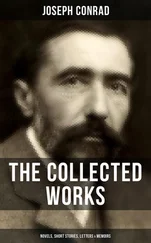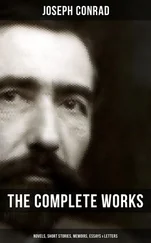By 1826, England was teetering on the brink of modernisation. The criminal code had been modified and a new police force created in London by Sir Robert Peel. A year earlier, Stephenson had built his three engines for the first passenger train between Stockton and Darlington; his ‘Rocket’ was only three years off. This was also the year in which the Society for the Diffusion of Useful Knowledge was founded, promoting adult education for workers in cities through Mechanics’ Institutes – to all intents and purposes adult night schools with libraries. These establishments were at the absolute vanguard of the notion of self-improvement and self-education even though there was still little chance of moving through the ranks. By the late 1850s and 1860s, ‘self-help’ would become a ruling preoccupation of the working and middle classes.
In horticulture there was a further, important development. Just as the first ‘modern’ strawberry (rather than the small wild woodland variety) was being cultivated, that passionate reformer and obstinate workaholic, John Loudon, launched the first periodical aimed at the practical gardener. It was the first popular magazine of its kind devoted exclusively to horticultural subjects, with the stated intention ‘to raise the intellect and the character of those engaged in this art’. In his first issue, he noted the transformation of taste over the previous twenty years, recognising that landscape gardening had given way ‘first to war and agriculture, and since the peace, to horticulture’.
Initially a quarterly, Loudon’s Gardener’s Magazine sold 4,000 of its first number in just a handful of days despite its five shilling price. It was different, packed with general advice and, in order to hold the price down, it eschewed colour plates and copper and steel engravings in favour of cruder wood engravings. Along with several other Loudon magazines, it was to continue until his death in 1843, criticising inefficiency in horticulture, visiting and reporting in detail on public and private gardens, reviewing contemporary books and periodicals, publishing nurserymen’s catalogues and price lists as well as reporting on the activities of the Horticultural Society. Every issue described the plethora of new gadgets becoming available to gardeners and was stuffed with articles on the widest range of subjects – from the use of green vegetable manure to the washing of salads or the method of setting the fruit of the granadilla. Paxton would later use many of the ideas initially published in this revolutionary magazine as a springboard for his own innovations.
Loudon used the introduction of the first issue to discuss three points closest to his heart. First, was the love of gardening he saw among all ages and all ranks of society. Secondly, he both praised the Horticultural Society for its encouragement and development of the science, and disparaged what he saw as Joseph Sabine’s mismanagement of the establishment – a criticism he would maintain doggedly until the society was reformed in 1830. Thirdly and perhaps most importantly, Loudon addressed the issue of improvement in the education of gardeners, pointing out that as the status of head gardener had risen, so had the need for development in their general instruction. This was a theme that was to continue throughout the life of the publication.
Interest in the gardens and the society was flourishing. Curiosity for new plants continued to grow so fast that, in 1827, the society held its first ‘fête’ in the garden. Only a couple of years later, over 1,500 carriages waited in a line extending from Hyde Park Corner along Hammersmith Road for the doors to open at nine o’clock, despite torrential rain. Paxton, meanwhile, witnessed the latest architectural and engineering technologies, examined the plants and techniques in the various departments, and spent time in the society’s library with the latest catalogues. He found himself in good company – the authority and distinction of the gardens were attracting labourers from some of the largest estates in England and abroad.
In 1826, Paxton was offered a position that was to settle the course of his future entirely. ‘On April 22nd Joseph Paxton, under gardener in the arboretum, left, recommended a place …’ These Council Meeting Notes of 4 May 1826 betray nothing of the fact that this was a defining moment in the young man’s life. He had been offered the position of Superintendent of the Gardens at Chatsworth – to all intents and purposes head gardener at one of the grandest estates in England and for one of the richest aristocrats in the land, the 6th Duke of Devonshire. Paxton was to be paid £ 1 5 s a week, or £ 65 a year, and live in a cottage in the kitchen gardens.
The immensely rich William Spencer Cavendish, 6th Duke of Devonshire, had apparently encountered Paxton as he let himself into the gardens through the gate from Chiswick House. Son of the celebrated Georgiana, the 6th Duke had inherited his title when he was 21, in the year after Paxton’s father died. With it, came estates comprising nearly 200,000 acres of land and the stately houses of Chatsworth and Hardwick Hall in Derbyshire, Lismore Castle in County Wexford, Ireland, Bolton Abbey in the West Riding and three great London palaces – Chiswick House and, in Mayfair, Devonshire House and Burlington House. With an inherited income of over £ 70,000 Hart, as he was known to his family, had the world at his feet.
At 36 years old, the Duke was unmarried, despite being the most eligible bachelor in England. He was partially deaf, and of a ‘sweet disposition’. He was, according to Prince Puckler-Muskau, attending one of his parties in 1826, ‘a King of fashion and elegance …’ No one could excel, and few could rival him, in position. He was clever and comical, sensitive, extravagant, nervous and, despite throwing many of the country’s best parties, somewhat lonely.
Given his particularly Regency interest in new, valuable and exotic plants, he is likely to have sought out the labourers in the ornamental garden, where Paxton was occupied in tending the new plants and training the creepers. In Paxton he found a straightforward youth, self-effacing as well as confident, passionate about his plants, full of energy, bright and patient. He was young and unproven but the Duke was without a gardener at Chatsworth and he acted impulsively – the appointment is not even noted in the detailed daily journal he kept for many years. He was anxious to be off. On 7 April the King had approved of his replacing Wellington as Extraordinary Ambassador to the Court of St James for the coronation of Tsar Nicholas I in Russia. Wellington was needed at home and though the Duke was a liberal Whig rather than a staunch Tory like Wellington, his wealth and position in England and his close friendship with Nicholas ensured that his lobbies for the role were successful.
On 8 May, two weeks after leaving the society – and not yet quite 23 – Paxton collected his instructions from Devonshire House and took the coach to Chatsworth. Together, in an unlikely but astonishingly fruitful pairing, he and the Duke would make the gardens at Chatsworth famous again after almost fifty years of neglect.
*Thus ‘Botany Bay’ outside Sydney, Australia. Plants discovered on these journeys included the Banksia, Grevillea, Protea, Acacia and Ficus .
*Careful descriptions of Miller’s experiments are found in his Dictionary , including new methods of forcing apricots and cherries by nailing the trees on to a screen of boards, glazing the south face and heating the north back with a hotbed.
†Though the Bessemer-Siemens process of ‘mild’ steel manufacture which made large-scale production possible was not commercially available until the 1860s.
Читать дальше











